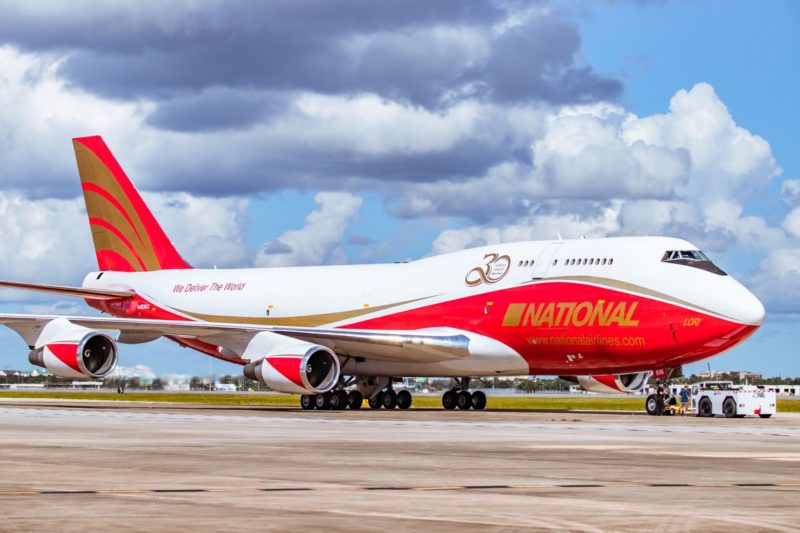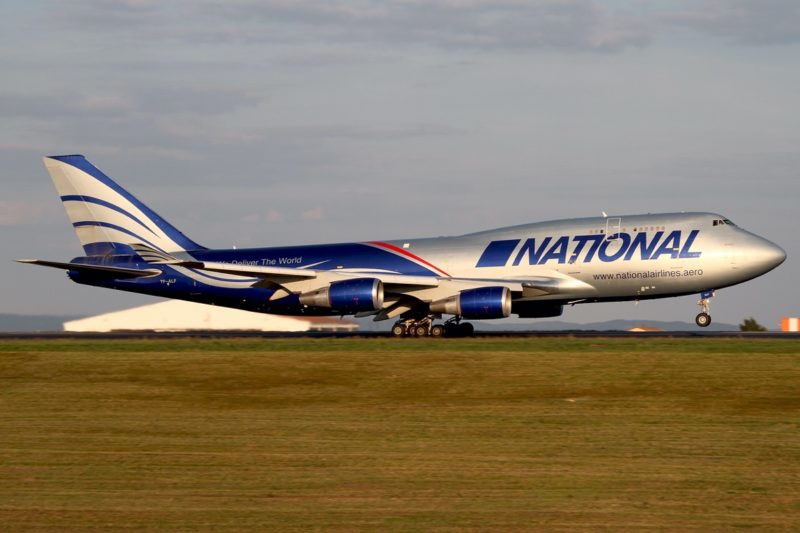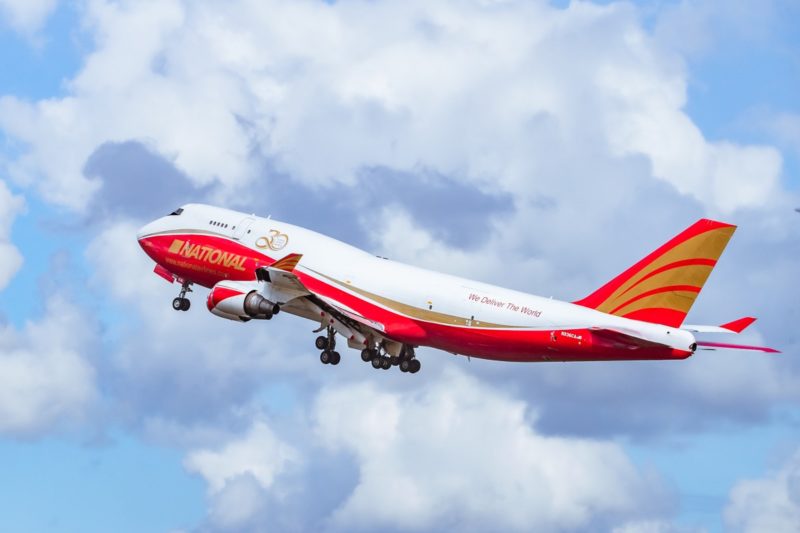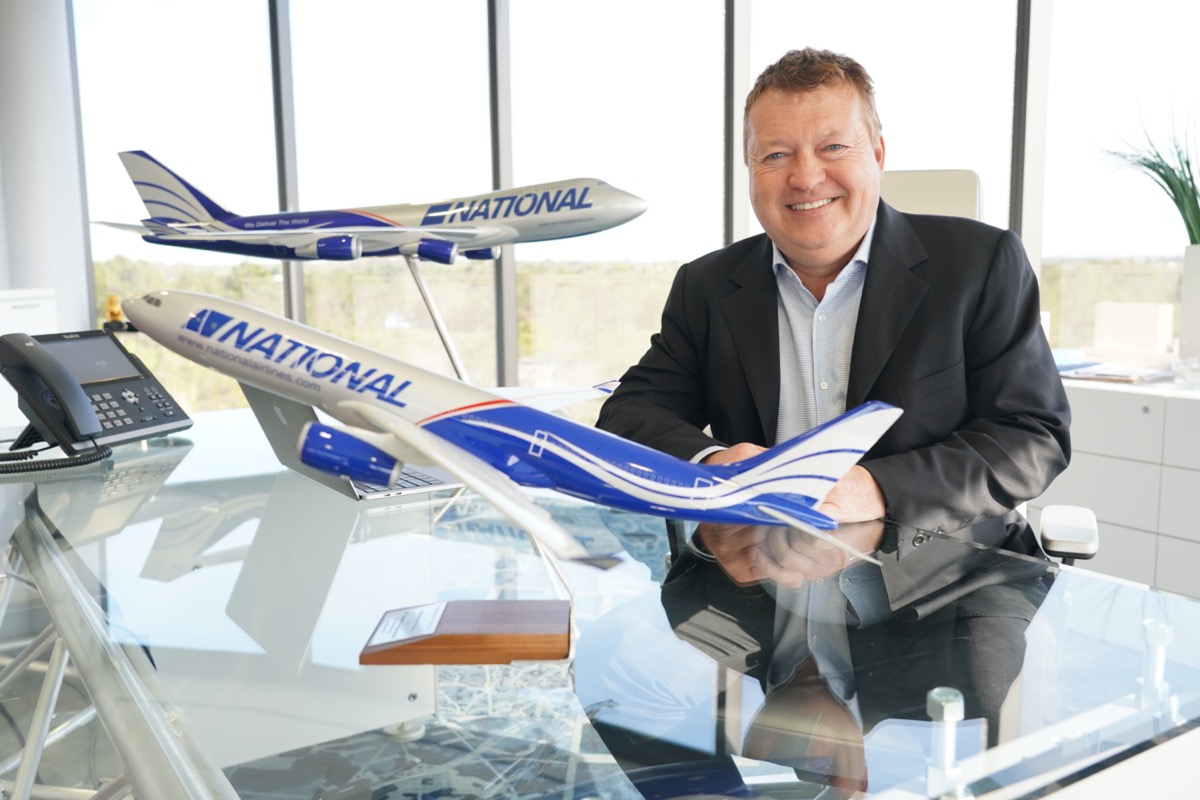National Airlines is looking to more than double and even triple its fleet of freighters to capitalize on the growth of air cargo, National Air Cargo Holdings Chairman and CEO Chris Alf has told me recently.
National is studying the recently launched Airbus A350F and Boeing 777-300 passenger-to-freighter conversion, but would also be interested in 747 freighters should they become available, Alf said.
“Sixty percent of worldwide cargo is transported in the belly area of passenger aircraft—this cannot be underscored enough. Without this capacity, which is not flying, the demand remains huge,”
National Air Cargo Holdings Chairman and CEO Chris Alf
Headquartered in Orlando, Florida, National Airlines operates six Boeing 747-400 BCFs (Boeing Converted Freighters) as well as two passenger aircraft: one Boeing 757 and one Airbus A330-200.

B747 Freighter Performance
In my conversation with Alf, it turned out soon, that Chris is a big fan of the 747 Freighter. Especially in terms of the aircraft performance.
“We are always looking for more aircraft, particularly 747 freighters. You hear about so many aircraft parked in the desert, but there are no 747Fs available. People are hanging on to that aircraft,” he noted.
National is looking at the market and hopes to add “some additional aircraft next year, no matter which kind of 747 freighter it is,” he said. The carrier could add at least 10 more 747s.

“We could more than double the fleet. Absolutely no question....That demonstrates how much we believe in this aircraft. The only thing that could potentially hurt the 747 would be a steep rise in fuel prices."
National Air Cargo Holdings Chairman and CEO Chris Alf
Alf describes the 747 BCF performance as “fantastic,” adding: “Maybe 15 to 20% of all our [747] flights take off with full payload, the majority of flights are volume cargo. There are very few cargoes [items] which require nose-loading, maybe one flight out of a hundred.”
Alf said the life expectancy of a 747 is a lot longer than people think. The aircraft was built for 35,000 cycles and 160,000 flying hours. “You can fly up to that point. Most of the 747 world fleet has less than half that time and easy-going for 10 more years in service, even the oldest one,” he said. The fact that many passenger 747s are grounded also means spare parts for the type are more readily available.

Operating Airbus Freighters
“But we are also looking to the Airbus A330-300 [converted] freighters,” Alf said. Within the next six months, two more A330 passenger aircraft should join National’s fleet. “So we get easy on the passenger side with the Airbus family. That is also the reason why we operate a A330 passenger aircraft: to get experience with Airbus Then we can easily operate the freighters, we could also add six of those A330Fs.”
As the chairman sees no problem operating a mixed fleet of A330Fs and 747Fs in the near future, he also has an eye on the next generation of freighters: the Airbus A350F and the 777XF. “Both are great aircraft, nothing wrong with them. But they are very expensive,” he said, noting that in terms of engine overhaul cost the 747 was many times cheaper.
“None of this stuff [the 777XF and A350F] is coming along any time soon,” he added. On the A350F, which looks set to come to market first, Alf says that since it is a new aircraft—which will have to get type-certificated—timings could easily slip in terms of availability. “I would like to perhaps have some preliminary discussions with Airbus about getting some A350Fs down the road,” he said.
Regarding 777-300 passenger-to-freighter conversions, he acknowledged that National is a little late to the party as a lot of the early conversion slots have been secured by other airlines, but there is an interest there.
Moving on to the 747-8F, Alf said the aircraft offers fantastic fuel burn, but the engines are extremely expensive to overhaul and the whole aircraft itself is a significantly pricier proposition than other 747s. “There are some aircraft available on the market, but they would need quite some work to get them back in shape,” he said.
Asked how many aircraft National could operate in the future, Alf said “15 to 20 freighter aircraft would be no problem” for the carrier. “If we can get the aircraft, we can operate them. We have the capability, the resources, the infrastructure,” Alf said.

About National Airlines
National Airlines is one of only a handful of privately held Part 121 International U.S. Flag Air Carriers. That means National is able to have global Open Sky traffic rights for both passenger and cargo operations to more than 100 countries. But more importantly, National gets slots in places where it is difficult for rivals to secure them, such as at Shanghai Pudong (PVG). “This gives us great opportunities because they look at us the same as China Eastern or China Southern. We are in the same category,” Alf said. As a scheduled carrier, it can offer extra sectors, particularly in Shanghai.
Alf believes the boom in air cargo will definitely go on for one or two more years. It is not slowing down as more and more customers turn to air freight and e-commerce is booming. “It can only grow,” he said. National currently has requests for three times more than the capacity it is able to operate with its existing fleet, he added.


